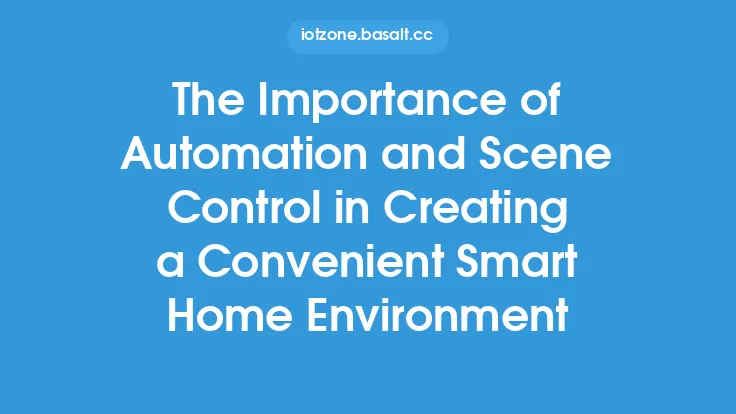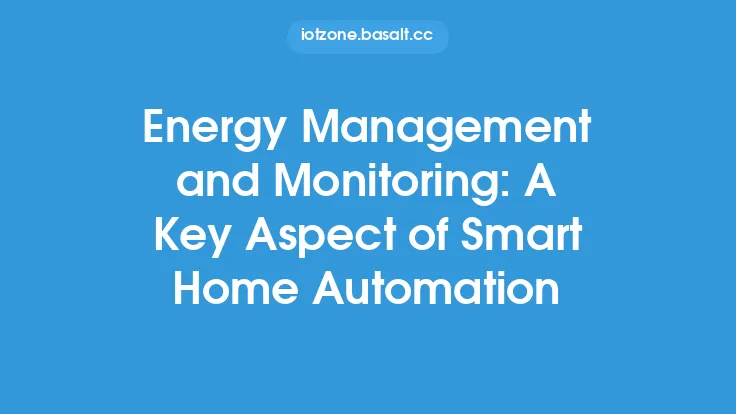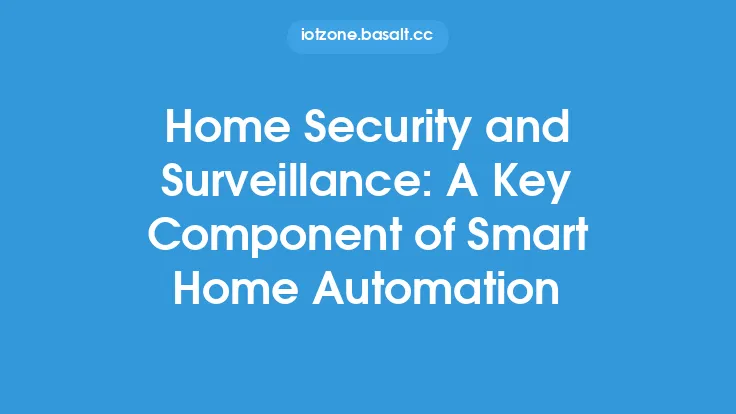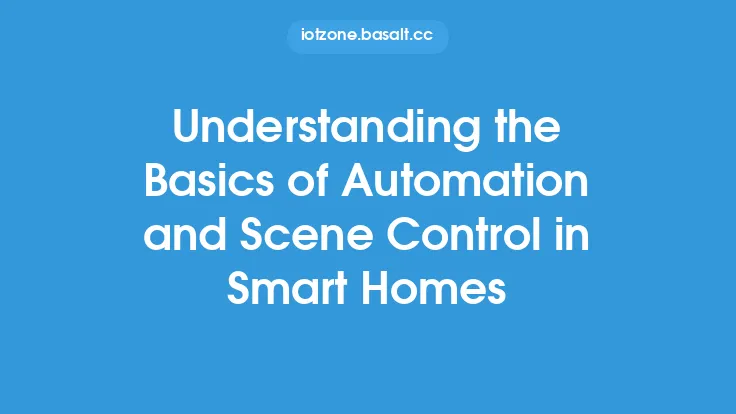The concept of smart home automation has revolutionized the way we live and interact with our living spaces. At the heart of this revolution lies automation and scene control, a crucial aspect that enables seamless integration of various smart devices and systems. Automation and scene control refer to the ability to automate and control various aspects of a smart home, such as lighting, temperature, security, and entertainment, to create a convenient, comfortable, and secure living environment.
Introduction to Automation and Scene Control
Automation and scene control involve the use of advanced technologies, including artificial intelligence, machine learning, and the Internet of Things (IoT), to create a network of interconnected devices and systems that can be controlled and automated. This allows homeowners to create customized scenes, or scenarios, that can be triggered by various events, such as time of day, occupancy, or weather conditions. For instance, a "good morning" scene can be created to automatically turn on the lights, adjust the thermostat, and play music when the homeowner wakes up.
Technical Aspects of Automation and Scene Control
From a technical perspective, automation and scene control rely on a range of protocols and technologies, including Zigbee, Z-Wave, Bluetooth, and Wi-Fi. These protocols enable communication between devices and systems, allowing them to be controlled and automated. Additionally, automation and scene control systems often rely on a central hub or controller, which acts as the brain of the system, processing commands and controlling the various devices and systems. Some popular automation and scene control protocols include IFTTT (If This Then That), which allows users to create customized recipes based on specific triggers and actions.
Components of Automation and Scene Control
Automation and scene control systems typically consist of several components, including sensors, actuators, and controllers. Sensors detect changes in the environment, such as motion, temperature, or light levels, and send signals to the controller, which then triggers the appropriate response. Actuators, on the other hand, are devices that perform specific actions, such as turning on lights or adjusting the thermostat. Controllers, as mentioned earlier, are the brain of the system, processing commands and controlling the various devices and systems.
Benefits of Automation and Scene Control
The benefits of automation and scene control are numerous. For one, they provide convenience and comfort, allowing homeowners to control their living environment with ease. They also enhance security, by allowing homeowners to monitor and control their home's security systems remotely. Additionally, automation and scene control can help reduce energy consumption, by automatically turning off lights and appliances when not in use. Furthermore, they can also improve the overall ambiance of a home, by creating customized scenes that enhance the mood and atmosphere.
Real-World Applications of Automation and Scene Control
Automation and scene control have a wide range of real-world applications, from residential to commercial and industrial settings. In residential settings, they can be used to create customized scenes for entertainment, such as a "movie night" scene that dims the lights and adjusts the sound system. In commercial settings, they can be used to enhance customer experience, such as by creating a welcoming atmosphere in a retail store. In industrial settings, they can be used to improve efficiency and productivity, by automating tasks and processes.
Challenges and Limitations of Automation and Scene Control
Despite the many benefits of automation and scene control, there are also several challenges and limitations to consider. One of the main challenges is interoperability, or the ability of different devices and systems to communicate with each other. This can be a significant challenge, particularly in homes with multiple smart devices and systems. Another challenge is security, as automation and scene control systems can be vulnerable to hacking and other cyber threats. Additionally, there can be limitations in terms of scalability and flexibility, particularly in larger or more complex systems.
Best Practices for Implementing Automation and Scene Control
To get the most out of automation and scene control, it's essential to follow best practices for implementation. This includes carefully planning and designing the system, taking into account the specific needs and requirements of the home or building. It's also essential to choose devices and systems that are compatible and interoperable, and to ensure that the system is secure and protected from cyber threats. Additionally, it's essential to test and troubleshoot the system, to ensure that it's working as intended and to identify any potential issues or problems.
Future Developments in Automation and Scene Control
The future of automation and scene control is exciting and rapidly evolving. One of the key trends is the increasing use of artificial intelligence and machine learning, which is enabling more advanced and sophisticated automation and scene control systems. Another trend is the growing importance of voice control, with voice assistants such as Alexa and Google Home becoming increasingly popular. Additionally, there is a growing focus on energy efficiency and sustainability, with automation and scene control systems being used to reduce energy consumption and promote more sustainable living practices.
Conclusion
In conclusion, automation and scene control are essential components of smart home automation, enabling seamless integration of various devices and systems to create a convenient, comfortable, and secure living environment. By understanding the technical aspects, components, benefits, and challenges of automation and scene control, homeowners and businesses can create customized scenes and scenarios that enhance their living and working spaces. As the technology continues to evolve and improve, we can expect to see even more advanced and sophisticated automation and scene control systems, enabling new levels of convenience, comfort, and sustainability.





